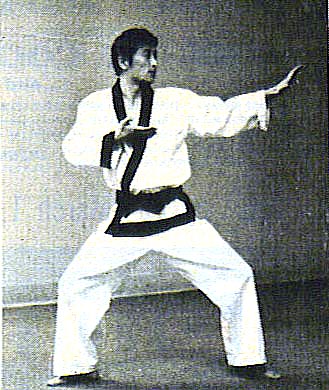
Soo Do Chung Dan Maki
Knife Hand Middle Block
Knife Hand Middle Block
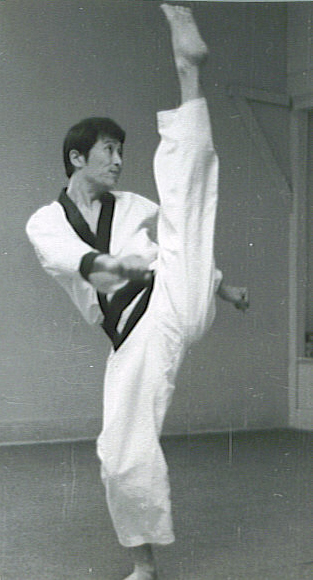
Sang Dan Ap Chaki
High Front Kick
High Front Kick
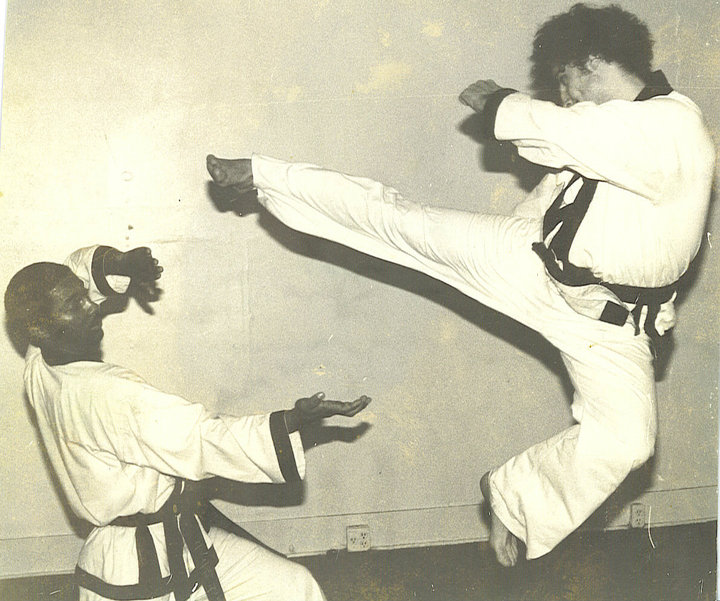
Metro Nashville Police Officer
Master Dimitri Cannon & Master Tony Pratt
Jump Scissor Roundhouse Kick
Yi Dan Dolyo Chaki
Yi Dan Dolyo Chaki
Inverted Soo Do (Knife hand)
All Contents of this website are
Copywrite © 2011
World Tang Soo Do Alliance pratttony@gmail.com
Copywrite © 2011
World Tang Soo Do Alliance pratttony@gmail.com
Tang Soo Do Karate West
Korean Karate History & Terminology
Tang Soo Do – (dang sue dough) Self-defense, literally “way of the China hand” or way of the “Tang” hand referring to the Tang Chinese dynasty. It is undeniably the largest single style martial arts system in the world. It is the Korean version of Karate. From Black Belt magazine; “During Korea’s Three Kingdom period (Koguryo, Paechta and Silla kingdoms; 57 B.C. - A.D. 668), the Chinese Tang dynasty helped the Silla defeat the Japanese-backed Paechta kingdom. To honor the Tang dynasty, the Silla created the martial art tangsu (Chinese hand) that was then taught to Korea’s renowned Hwarang warriors. In 1945, Hwang Kee (1914-2002) combined the skills he learned from practicing Chinese and Korean martial arts with his working knowledge of Okinawan karate. He named the amalgamated style hwa soo do in honor of the Hwarang warriors. However, because he had difficulty raising interest with the public to learn the art, he chose a new name for the style that was more familiar to the Korean people: tang soo do moo duk kwan (way of the Chinese hand in the martial virtue school). Although the foundation of tang soo do has existed for about 1300 years—beginning with the martial art tangsu—Hwang Kee is considered the modern-day founder of tang soo do. Until the time of his death, he fought tirelessly—to no avail—to unify all the Korean martial arts under the tang soo do moniker.” It is the ancient battle of martial art versus martial sport. Tang Soo Do flies the traditional banner for the art of self-defense and practical social science i.e. cultural ethics, and etiquette of Tang Soo Do while most modern Tae Kwon Do is focused on either the Olympic sport or other forms of competitive martial arts. Many Tang Soo Do practitioners enjoy varying degrees of commercialization and enjoy competing. Why not? I would love to see Black Belt magazine and Karate Illustrated go back through the top ten forms and fighting competitors listed in past issues and determine the percentages from various styles. I would speculate that the vast majority of winners are Korean stylists particularly Moo Duk Kwan - Whae Won (members)
Karate – according to Black Belt magazine and other independent sources the term “karate” was first used in 1722 when Okinawan martial artist Sakugawa created his martial art karate-no-sakugawa, wherein kara refers to China. Thus, karate originally meant “Chinese hand” or “Tang Hand” after China’s Tang dynasty. However, when karate was introduced into Japan, the meaning of “kara” was changed to “empty.” This is why karate is translated today as “empty hand.”
Moo Duk Kwan – School of Martial Virtue. It is the organization behind the Tang Soo Do system. Moo Duk Kwan is split into two groups. One is Soo Bahk Do, formerly Tang Soo Do, and earlier Hwa Soo Do. The other is Tae Kwon Do Moo Duk Kwan. Soo Bahk Do was founded by Grand Master Hwang Kee, November 9, 1945. Moo Duk Kwan Taekwondo merged together with eight other Kwans or Schools to form Taekwondo.
· Moo – military, chivalry, martial; within the ideograph the inner part of the symbol is the word for "stop" and the outer part means "weapon"
· Duk – benevolence, virtue, goodness, commanding respect; within the ideograph on the left, it means "little steps" or "to happen", and on the right the character means "moral"; thus moral steps or perhaps virtuous conduct
· Kwan – large building, palace, library; again within the ideograph, the left part looks like a roofed building and technically means "to eat" (under a roof).
Tae Kwon Do – Korean Karate system that became a full medal Olympic sport in 1988. Taekwondo has as it’s foundation a firm footing in the Korean military, where the hands were and are considered too valuable to be used in combat, Taekwondo therefore emphasizes and focuses predominantly on the development of advanced kicking skills. The vast majority of Taekwondoists have roots in Tang Soo Do Moo Duk Kwan.
· Tae – Foot
· Kwon - Fist (or, "to smash with the fist")
· Do – Way or path.
Do Jang – Training Hall of discipline.
Do Bok – Training uniform.
Je Jae – Students
Whae Won – Members
Gup – Class or grade or rank.
Yu Gup Ja – Class holder
Dan – Degree
Yu Dan Ja – Degree holder
Jo Kyo Nim – 1st Dan (degree) black belt
Boo Sah Bum Nim – Above 3rd Dan black belt
Sah Bum Nim – 5th Dan black belt Master Instructor
Kwan Jang Nim – President or High level manager
Bon Kwan – Main School or headquarters
Ji Kwan – Branch School
COMMANDS
Charyut (Chariot cha ree oot) – Attention command (heels together, hands clasp at the sides readiness preparatory posture)
Kyong Yet (kyung yet) – Bow (lean and gaze forward approximately 30 degrees when bowing not making direct eye contact with your opponent and/or training partner)
Chun Bi (choon bee) – Assume Ready stance (draw energy and balance to the center palms facing inward toward the chest raising the left foot, then stepping the distance of your shoulder width to the left with feet parallel and punching downward locking the arms straight out leaving about one fist space between your two fists. (no bent elbow position)
Ba Ro (bah row) – Return to Ready stance or position
Shi Oh (she owe) – Rest or relax. (At ease, turn around during Shi Oh and facing away from the instructor to catch your breath, adjust uniform or wipe sweat, scratch etc.)
Si Chak (she jock) – Begin or commence.
Ku man (goo mahn) – Stop or cease altogether.
Galyeo (gull yea oh) – Break or pause before resuming free sparring
Gae Sook – Continue or Resume free sparring
Muk Nyom (mook knee yum) – Meditate (usually kneeling)
Ahn Jo – sit down.
Yi ro sut (yee row soot) – Stand up.
Yi ro sut Muk Nyom – Standing meditation
Ki Cho Hyuk Tae – Basic movements
Ha Dan – Lower portion of body
Chung Dan – Middle portion of body
Sang Dan – Upper portion of body
Maki (mah kee) - Block or defensive maneuver
Chaki (jockey) – Kick
Kong Kyuk – Hand Attack
Ap – Front
Yup – Side
Dwit – (tweet) Back
Dolyo (dole yo) Roundhouse
Dwit Dolyo – back or reverse roundhouse
Jasse – Stance
Chun Gul Jasse – Front stance or forward stance
Kima Jasse (kee mah jah say)– Horse stance or side stance
Hu Gul Jasse (who gull jah say) – Back or Cat stance (weight shifted back)
Yi Dan (yee don) – Jump
Ha Dan Maki – Low block (lower level defense)
Chung Dan Maki – Middle block
Sang Dan Maki – High block
Chung Dan Kong Kyuk – Middle punch
Sang Dan Kong Kyuk – Upper punch
Soo Do (sue dough) – Knife hand
Soo Do Chung Dan Maki – Knife hand middle block
Soo Do Ha Dan Maki – Knife hand low block
Ahn Eh Soo Bak Oo Ro Maki – Inside to out block
Bahk Eh Soo Ahn Oo Ro Maki
Yuk Soo (yook sue) – Ridge hand
Kwan Soo (gwan sue) – Spear hand
Sang Soo – Double Fist block
Chun Gul Sang Soo – double fist block forward stance
Hu Gul Sang Soo – double fist block cat stance
Kap Kwan (cop kwon) – Back fist
Yu Kwan (yoo kwon) – Bottom fist aka hammer fist
Il Ji Kwan Soo (eel chi gwan sue) – One finger spear hand
Yi Ji Kwan Soo (yee chi gwan sue) – Two finger spear hand
Chigi – Hand strike
Ba Tang Sohn Chigi - Palm Heel Strike
Pal Kum Chi – Elbow Strike
Chung Dan Yup Kong Kyuk or Whang Jin – Side Attack
Yuk Jin (yook gin) – Opposite Attack
Ap Chaki – Front kick
Yup Chaki – Side kick
Yup Hu Riki – Hook kick
Dolyo Chaki – Roundhouse kick
Dwit Chaki – Back kick
Peet Chaki – Inverted roundhouse (twisting) kick
Yi Dan Ap Chaki – Jump Front kick
Naeryo Chaki - Axe Kick
An Chaki - Inner Crescent Kick
Bakat Chaki - Outer Crescent Kick
Mirro Chaki - Push Kick
Yi Dan Yup Chaki – Jump Side kick
Yi Dan Dolyo Chaki – Jump Roundhouse kick
Yi Dan Dwit Chaki – Jump Back kick
Yi Dan Dwit Dolyo Chaki – Jump Wheel or Reverse Roundhouse kick
IL Soo Sik – One Step sparring
Sam Soo Sik – Three Step sparring
Cha Yu Tae Ryun – Free sparring
COUNTING Korean Sino-Korean
#1 Hana IL
#2 Tul Yi
#3 Set Sam
#4 Net Sah
#5 Tasot Oh
#6 Yosot Yuk
#7 ILGop Chil
#8 Yodol Pal
#9 Ahop Ku
#10 Yol Sip
Korean Karate History & Terminology
Tang Soo Do – (dang sue dough) Self-defense, literally “way of the China hand” or way of the “Tang” hand referring to the Tang Chinese dynasty. It is undeniably the largest single style martial arts system in the world. It is the Korean version of Karate. From Black Belt magazine; “During Korea’s Three Kingdom period (Koguryo, Paechta and Silla kingdoms; 57 B.C. - A.D. 668), the Chinese Tang dynasty helped the Silla defeat the Japanese-backed Paechta kingdom. To honor the Tang dynasty, the Silla created the martial art tangsu (Chinese hand) that was then taught to Korea’s renowned Hwarang warriors. In 1945, Hwang Kee (1914-2002) combined the skills he learned from practicing Chinese and Korean martial arts with his working knowledge of Okinawan karate. He named the amalgamated style hwa soo do in honor of the Hwarang warriors. However, because he had difficulty raising interest with the public to learn the art, he chose a new name for the style that was more familiar to the Korean people: tang soo do moo duk kwan (way of the Chinese hand in the martial virtue school). Although the foundation of tang soo do has existed for about 1300 years—beginning with the martial art tangsu—Hwang Kee is considered the modern-day founder of tang soo do. Until the time of his death, he fought tirelessly—to no avail—to unify all the Korean martial arts under the tang soo do moniker.” It is the ancient battle of martial art versus martial sport. Tang Soo Do flies the traditional banner for the art of self-defense and practical social science i.e. cultural ethics, and etiquette of Tang Soo Do while most modern Tae Kwon Do is focused on either the Olympic sport or other forms of competitive martial arts. Many Tang Soo Do practitioners enjoy varying degrees of commercialization and enjoy competing. Why not? I would love to see Black Belt magazine and Karate Illustrated go back through the top ten forms and fighting competitors listed in past issues and determine the percentages from various styles. I would speculate that the vast majority of winners are Korean stylists particularly Moo Duk Kwan - Whae Won (members)
Karate – according to Black Belt magazine and other independent sources the term “karate” was first used in 1722 when Okinawan martial artist Sakugawa created his martial art karate-no-sakugawa, wherein kara refers to China. Thus, karate originally meant “Chinese hand” or “Tang Hand” after China’s Tang dynasty. However, when karate was introduced into Japan, the meaning of “kara” was changed to “empty.” This is why karate is translated today as “empty hand.”
Moo Duk Kwan – School of Martial Virtue. It is the organization behind the Tang Soo Do system. Moo Duk Kwan is split into two groups. One is Soo Bahk Do, formerly Tang Soo Do, and earlier Hwa Soo Do. The other is Tae Kwon Do Moo Duk Kwan. Soo Bahk Do was founded by Grand Master Hwang Kee, November 9, 1945. Moo Duk Kwan Taekwondo merged together with eight other Kwans or Schools to form Taekwondo.
· Moo – military, chivalry, martial; within the ideograph the inner part of the symbol is the word for "stop" and the outer part means "weapon"
· Duk – benevolence, virtue, goodness, commanding respect; within the ideograph on the left, it means "little steps" or "to happen", and on the right the character means "moral"; thus moral steps or perhaps virtuous conduct
· Kwan – large building, palace, library; again within the ideograph, the left part looks like a roofed building and technically means "to eat" (under a roof).
Tae Kwon Do – Korean Karate system that became a full medal Olympic sport in 1988. Taekwondo has as it’s foundation a firm footing in the Korean military, where the hands were and are considered too valuable to be used in combat, Taekwondo therefore emphasizes and focuses predominantly on the development of advanced kicking skills. The vast majority of Taekwondoists have roots in Tang Soo Do Moo Duk Kwan.
· Tae – Foot
· Kwon - Fist (or, "to smash with the fist")
· Do – Way or path.
Do Jang – Training Hall of discipline.
Do Bok – Training uniform.
Je Jae – Students
Whae Won – Members
Gup – Class or grade or rank.
Yu Gup Ja – Class holder
Dan – Degree
Yu Dan Ja – Degree holder
Jo Kyo Nim – 1st Dan (degree) black belt
Boo Sah Bum Nim – Above 3rd Dan black belt
Sah Bum Nim – 5th Dan black belt Master Instructor
Kwan Jang Nim – President or High level manager
Bon Kwan – Main School or headquarters
Ji Kwan – Branch School
COMMANDS
Charyut (Chariot cha ree oot) – Attention command (heels together, hands clasp at the sides readiness preparatory posture)
Kyong Yet (kyung yet) – Bow (lean and gaze forward approximately 30 degrees when bowing not making direct eye contact with your opponent and/or training partner)
Chun Bi (choon bee) – Assume Ready stance (draw energy and balance to the center palms facing inward toward the chest raising the left foot, then stepping the distance of your shoulder width to the left with feet parallel and punching downward locking the arms straight out leaving about one fist space between your two fists. (no bent elbow position)
Ba Ro (bah row) – Return to Ready stance or position
Shi Oh (she owe) – Rest or relax. (At ease, turn around during Shi Oh and facing away from the instructor to catch your breath, adjust uniform or wipe sweat, scratch etc.)
Si Chak (she jock) – Begin or commence.
Ku man (goo mahn) – Stop or cease altogether.
Galyeo (gull yea oh) – Break or pause before resuming free sparring
Gae Sook – Continue or Resume free sparring
Muk Nyom (mook knee yum) – Meditate (usually kneeling)
Ahn Jo – sit down.
Yi ro sut (yee row soot) – Stand up.
Yi ro sut Muk Nyom – Standing meditation
Ki Cho Hyuk Tae – Basic movements
Ha Dan – Lower portion of body
Chung Dan – Middle portion of body
Sang Dan – Upper portion of body
Maki (mah kee) - Block or defensive maneuver
Chaki (jockey) – Kick
Kong Kyuk – Hand Attack
Ap – Front
Yup – Side
Dwit – (tweet) Back
Dolyo (dole yo) Roundhouse
Dwit Dolyo – back or reverse roundhouse
Jasse – Stance
Chun Gul Jasse – Front stance or forward stance
Kima Jasse (kee mah jah say)– Horse stance or side stance
Hu Gul Jasse (who gull jah say) – Back or Cat stance (weight shifted back)
Yi Dan (yee don) – Jump
Ha Dan Maki – Low block (lower level defense)
Chung Dan Maki – Middle block
Sang Dan Maki – High block
Chung Dan Kong Kyuk – Middle punch
Sang Dan Kong Kyuk – Upper punch
Soo Do (sue dough) – Knife hand
Soo Do Chung Dan Maki – Knife hand middle block
Soo Do Ha Dan Maki – Knife hand low block
Ahn Eh Soo Bak Oo Ro Maki – Inside to out block
Bahk Eh Soo Ahn Oo Ro Maki
Yuk Soo (yook sue) – Ridge hand
Kwan Soo (gwan sue) – Spear hand
Sang Soo – Double Fist block
Chun Gul Sang Soo – double fist block forward stance
Hu Gul Sang Soo – double fist block cat stance
Kap Kwan (cop kwon) – Back fist
Yu Kwan (yoo kwon) – Bottom fist aka hammer fist
Il Ji Kwan Soo (eel chi gwan sue) – One finger spear hand
Yi Ji Kwan Soo (yee chi gwan sue) – Two finger spear hand
Chigi – Hand strike
Ba Tang Sohn Chigi - Palm Heel Strike
Pal Kum Chi – Elbow Strike
Chung Dan Yup Kong Kyuk or Whang Jin – Side Attack
Yuk Jin (yook gin) – Opposite Attack
Ap Chaki – Front kick
Yup Chaki – Side kick
Yup Hu Riki – Hook kick
Dolyo Chaki – Roundhouse kick
Dwit Chaki – Back kick
Peet Chaki – Inverted roundhouse (twisting) kick
Yi Dan Ap Chaki – Jump Front kick
Naeryo Chaki - Axe Kick
An Chaki - Inner Crescent Kick
Bakat Chaki - Outer Crescent Kick
Mirro Chaki - Push Kick
Yi Dan Yup Chaki – Jump Side kick
Yi Dan Dolyo Chaki – Jump Roundhouse kick
Yi Dan Dwit Chaki – Jump Back kick
Yi Dan Dwit Dolyo Chaki – Jump Wheel or Reverse Roundhouse kick
IL Soo Sik – One Step sparring
Sam Soo Sik – Three Step sparring
Cha Yu Tae Ryun – Free sparring
COUNTING Korean Sino-Korean
#1 Hana IL
#2 Tul Yi
#3 Set Sam
#4 Net Sah
#5 Tasot Oh
#6 Yosot Yuk
#7 ILGop Chil
#8 Yodol Pal
#9 Ahop Ku
#10 Yol Sip
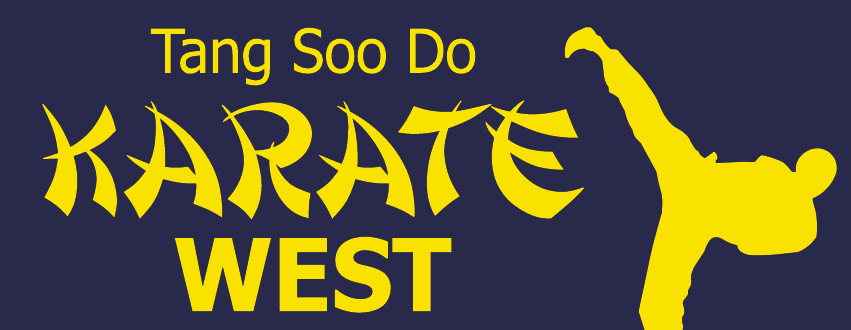
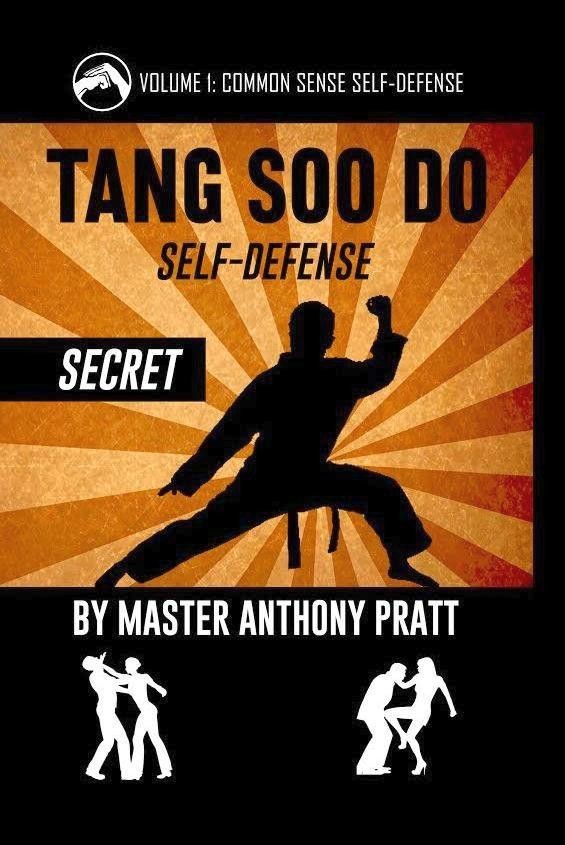
Click Master Pratt's book cover ABOVE to purchase the book on Amazon. The Kindle is available for 3.99 Scroll down page to Matchbook price and click on
Whats This?
Whats This?